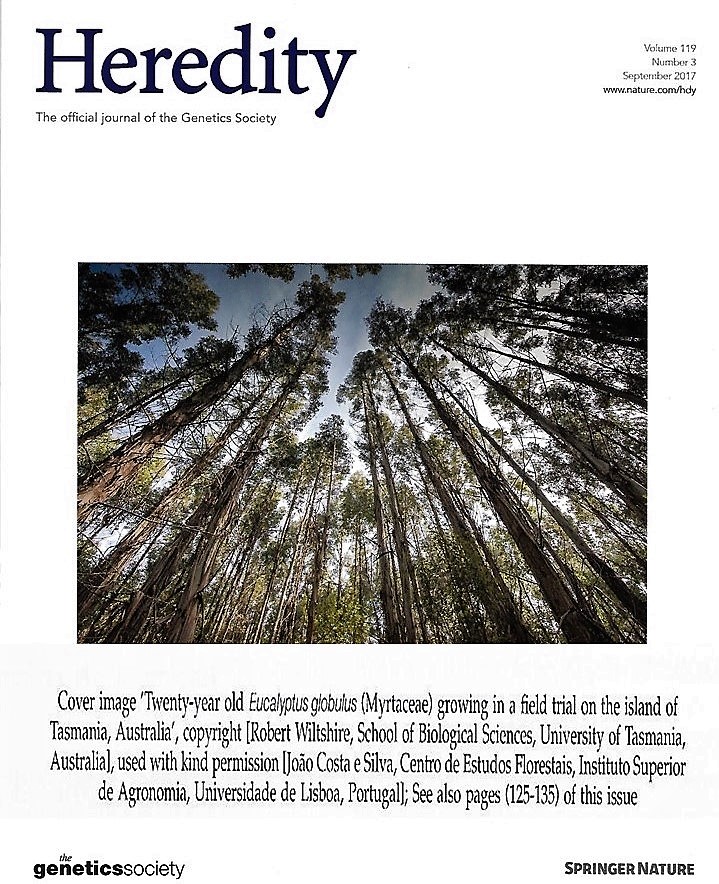Genetic-based interactions among tree neighbors: identification of the most influential neighbors, and estimation of correlations among direct and indirect genetic effects for leaf disease and growth in Eucalyptus globulus
CEF is proud of the fact that the paper coordinated by the researcher João Costa e Silva has been the front cover of the journal Heredity, in September.
The paper is entitled "Genetic-based interactions among tree neighbors: identification of the most influential neighbors, and estimation of correlations among direct and indirect genetic effects for leaf disease and growth in Eucalyptus globulus", and is written by João Costa e Silva in collaboration with B M Potts, A R Gilmour and R J Kerr.
The study addresses the modelling and detection of indirect genetic effects associated with the interactions among trees of a given species, and their importance for the estimation of genetic parameters and responses to selection for growth and disease susceptibility traits.
Link to the article: https://www.nature.com/hdy/journal/v119/n3/full/hdy201725a.html
Abstract: An individual’s genes may influence the phenotype of neighboring conspecifics. Such indirect genetic effects (IGEs) are important as they can affect the apparent total heritable variance in a population, and thus the response to selection. We studied these effects in a large, pedigreed population of Eucalyptus globulus using variance component analyses of Mycosphearella leaf disease, diameter growth at age 2 years, and post-infection diameter growth at ages 4 and 8 years. In a novel approach, we initially modeled IGEs using a factor analytic (FA) structure to identify the most influential neighbor positions, with the FA loadings being position-specific regressions on the IGEs. This involved sequentially comparing FA models for the variance–covariance matrices of the direct and indirect effects of each neighbor. We then modeled IGEs as a distance-based, combined effect of the most influential neighbors. This often increased the magnitude and significance of indirect genetic variance estimates relative to using all neighbors. The extension of a univariate IGEs model to bivariate analyses also provided insights into the genetic architecture of this population, revealing that: (1) IGEs arising from increased probability of neighbor infection were not associated with reduced growth of neighbors, despite adverse fitness effects being evident at the direct genetic level; and (2) the strong, genetic-based competitive interactions for growth, established early in stand development, were highly positively correlated over time. Our results highlight the complexities of genetic-based interactions at the multi-trait level due to (co)variances associated with IGEs, and the marked discrepancy occurring between direct and total heritable variances.




